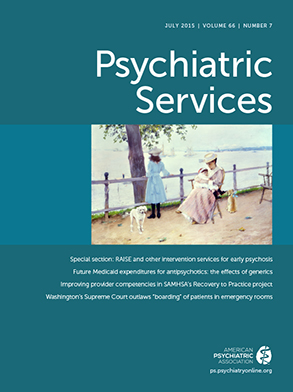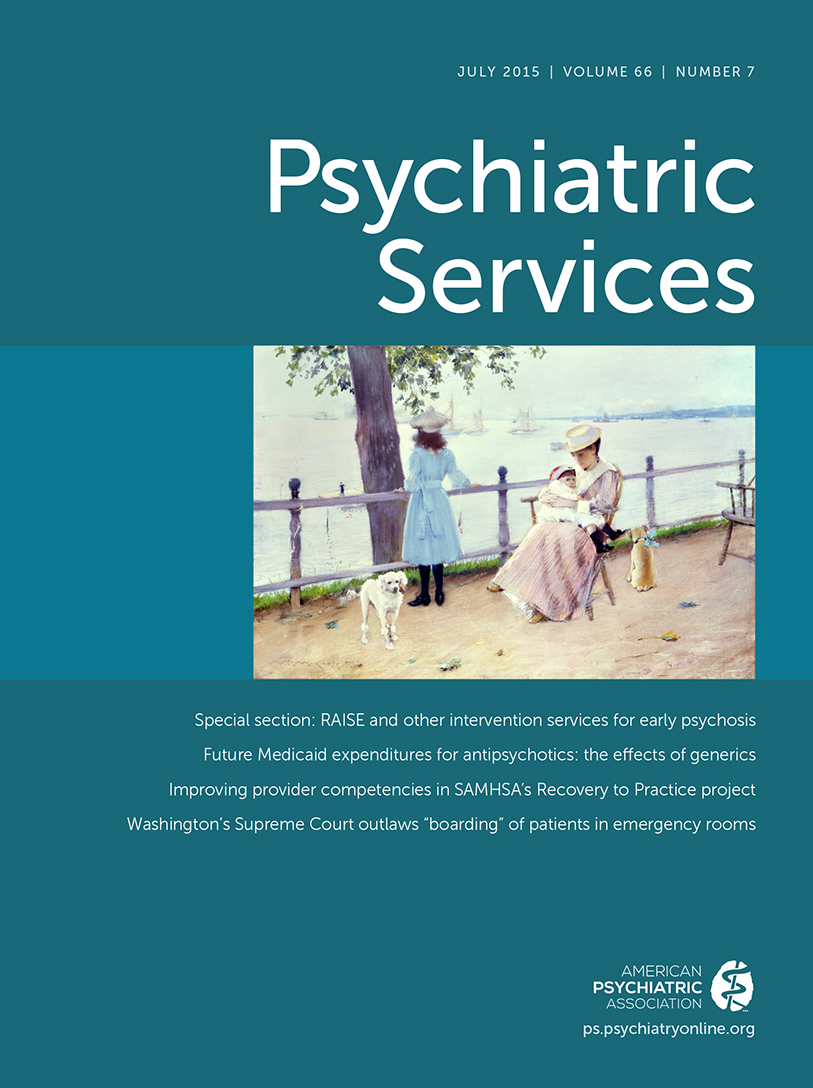ICER review of evidence for integrated care: The Institute for Clinical and Economic Review (ICER) has released a report summarizing evidence on the comparative clinical effectiveness of integrated care. The 141-page report,
Integrating Behavioral Health Into Primary Care: A Technology Assessment, is based on draft reports that were discussed at recent meetings of two independent groups: the California Technology Assessment Forum (CTAF) and the New England Comparative Effectiveness Public Advisory Council (CEPAC). Both groups voted unanimously that research shows that the collaborative care model (CCM)—the integration approach with the strongest evidence base—improves health outcomes related to depression and anxiety and results in higher patient satisfaction, compared with usual care. For integration models other than the CCM, both groups judged the evidence to be insufficient for determining effects on key outcomes, emphasizing that this judgment indicates a need for more research rather than the failure of other models to provide benefit. In practices that implement the CCM, patients are screened for depression and anxiety with validated tools. Care managers work with primary care physicians to support medication management, provide brief counseling and other services, and coordinate across providers. Psychiatric consultants are available to support the care team. Patient progress is systematically tracked and monitored in a central data registry. The economic analysis used in the ICER review had three objectives: to assess comparative care value, to describe publicly available resources for planning and implementing integration, and to estimate the budgetary impact of implementing two different models—the CCM and another promising model, the behavioral health consultant model—in a 200,000-member Medicaid plan. The ICER final report is available on the Web sites of CTAF (
ctaf.org/reports/integration-behavioral-health-primary-care) and CEPAC (
cepac.icer-review.org/adaptations/integration).
PCPCC calls for implementation of peer support in patient-centered medical homes: Provisions of the Affordable Care Act (ACA) have begun to shift the health care system away from one that treats illness after it occurs to one that relies more on the promotion of population health through team-based primary care and through stronger connections to community and social supports for patients and families. To achieve these goals, primary care providers are encouraged to practice as a patient-centered medical home (PCMH). In April 2015, the Patient-Centered Primary Care Collaborative (PCPCC), in partnership with Peers for Progress (a program of the American Academy of Family Physicians Foundation) and the National Council of La Raza, held a conference to discuss the role of peer support in primary care, inviting ten model programs to make presentations. In addition to describing the ten model programs, the 46-page conference report,
Peer Support in the Patient-Centered Medical Home, summarizes key conference discussions and offers a picture of where the health care field is headed in terms of integrating community health workers (CHWs) into advanced primary care and the PCMH. “Community health workers” is the umbrella term used in the report for a range of peer support workers, including
promotores de salud, lay health advisors, health coaches, and navigators. The report addresses issues such as linking CHWs into the primary care team, building relationships with communities, maintaining “peerness” in the biomedical culture of health, and adapting emerging financing mechanisms. The report emphasizes the culture shift that is needed to fully realize the value of peer support. “Instead of viewing peer support and CHWs as an ‘add-on’ to health care and trying to roll their services into existing protocols and payment structures, we should be asking how we can change health care to be more attuned to peer-to-peer support. As a ‘disruptive innovation,’ the potential of peer support is far greater than incremental improvements, but holds the promise of transforming primary care and community health.” The report is available on the PCPCC Web site (
www.pcpcc.org/webinar/integrating-peer-support-primary-care).
Activation of National Housing Trust Fund described in TAC report: The shortage of affordable rental housing is a major barrier to community integration of people with disabilities. The National Housing Trust Fund (NHTF) program is a new tool for states to use to address the affordable housing crisis. The NHTF was authorized by Congress primarily to address the shortage of housing affordable to extremely low-income (ELI) households (incomes between 0 and 30% of area median income). In December 2014, the Federal Housing Finance Agency lifted its six-year suspension of Fannie Mae and Freddie Mac’s obligation to contribute to the NHTF. This decision means that NHTF funds are scheduled to be allocated to state housing agencies in 2016. It is currently estimated that between $250 and $500 million will be available in 2016, with each state and the District of Columbia receiving a minimum of $3 million. A new report from the Technical Assistance Center (TAC) calls the activation of NHTF “an important new opportunity for states to begin shaping the future of our nation’s ELI housing policies, including a robust expansion of integrated permanent supportive housing units for the most vulnerable ELI populations.” The purpose of the report is to provide advocates with the information they need to undertake NHTF policy conversations with state housing officials about tested strategies that can maximize the number of new ELI units created with the 2016 allocation. Over the past decade, a number of state housing agencies have pioneered financing approaches to increase the supply of permanent supportive housing units. The TAC report documents strategies developed by Pennsylvania, North Carolina, and Illinois that could be adapted for NHTF capital and operating subsidy funding. The 55-page report,
Creating New Integrated Permanent Supportive Housing Opportunities for ELI Households: A Vision for the Future of the National Housing Trust Fund, is available on the TAC Web site (
www.tacinc.org).
AHRQ technical brief reviews strategies to reduce psychiatric admissions: Readmissions are costly and disruptive to individuals and families and can be demoralizing for all concerned. In recent years, the perception has grown that inpatient stays are too short, although little is known about the comparative effectiveness of different lengths of stay for patients with serious mental illness. A review by the Agency for Healthcare Research and Quality (AHRQ) examines evidence for four core strategies for decreasing repeated hospitalizations: implementing longer stays, providing support services for the transition to outpatient care, creating short-term outpatient alternatives for those not at significant risk of harm to self or others, and implementing long-term approaches. Of 64 studies that assessed the link between a management strategy and readmission, two addressed length of stay, five addressed transition support services, four addressed short-term alternatives, and 53 addressed long-term approaches, such as assertive community treatment (ACT), intensive case management, and involuntary outpatient commitment (compulsory treatment orders). Although the review sought to identify key components of the strategies that could be linked to reductions in readmissions, it found no broad theoretical model, other than ACT, that articulated key components. Important next steps include determining the components, or packages of components, that are most effective; devising accurate measures for the most meaningful outcomes; and efficiently applying these strategies in the face of limited resources. The 26-page report,
Management Strategies to Reduce Psychiatric Readmissions, is available on the AHRQ Web site (
effectivehealthcare.ahrq.gov/search-for-guides-reviews-and-reports/?pageaction=displayproduct&productID=2082).
Commonwealth Fund 2014 survey finds millions of Americans underinsured: Most Americans—more than 150 million people—get their health insurance through employers. Before the ACA, employer coverage was generally far more comprehensive than individual market coverage. However, pressures over the past decade have led employers to share increasing amounts of their health costs with workers, particularly in the form of higher deductibles. The latest Commonwealth Fund Biennial Health Insurance Survey, conducted between July and December 2014, categorized adults as being underinsured if they had health insurance continuously for the prior 12 months but had out-of-pocket costs or deductibles that were high relative to their incomes. Survey findings indicate that among adults ages 19 to 64 who were insured all year, 23%, or 31 million people, were underinsured. These estimates are unchanged from 2010 and 2012 but nearly double those reported in 2003, when the measure was first introduced in the survey. The share of continuously insured adults with high deductibles has tripled, rising from 3% in 2003 to 11% in 2014. Half (51%) of underinsured adults reported problems with medical bills or debt, and 44% reported not getting needed care because of cost. Because the survey was fielded in the latter half of 2014, it could not assess the effects of the ACA on underinsurance because survey respondents who were insured all year had insurance that began before the ACA’s major coverage expansions and reforms went into effect. Respondents who had new marketplace or Medicaid coverage under the ACA would not have had that coverage for a full 12 months, because it would have begun in January 2014 at the earliest. Similarly, people with individual market coverage who were insured all year would have spent all or part of the period in plans that did not yet reflect the consumer protections in the law. The 20-page report,
The Problem of Underinsurance and How Rising Deductibles Will Make It Worse: Findings From the Commonwealth Fund Biennial Health Insurance Survey, 2014, is available on the Commonwealth Fund’s Web site (
www.commonwealthfund.org).
Kaiser Foundation report examines experiences of newly insured Californians under the ACA: Between October 2013 and 2014, about 2.8 million people were determined eligible for California’s Medicaid program, which was expanded under the ACA. During that period, roughly 1.7 million people applied and were determined eligible for enrollment in a private plan through Covered California, the state-run insurance marketplace. Low-income California adults who gained insurance coverage in 2014 had an easier time accessing health care than those who were uninsured and experienced better financial protection from medical bills, according to a new Kaiser Family Foundation (KFF) report. Newly insured Californians were more likely than the uninsured to have a usual source of health care (61% versus 43%) and to have used medical services (58% versus 45%). Although most newly insured adults rated their health plan as excellent or good, some reported ongoing challenges. More than a third (35%) said that they postponed or went without needed health care (versus 29% of those who were continuously insured), and nearly half (47%) said it was somewhat or very difficult to afford their monthly premium. The KFF report looks at Californians who gained coverage in 2014 and those who remained uninsured and why. It examines how people view their coverage and how coverage affects financial security and access to care. The report, which was funded by the Blue Shield of California Foundation, was based on findings from the California sample of the 2014 Kaiser Survey of Low-Income Americans and the ACA. The report is available on the KFF Web site (
kff.org/health-reform).

